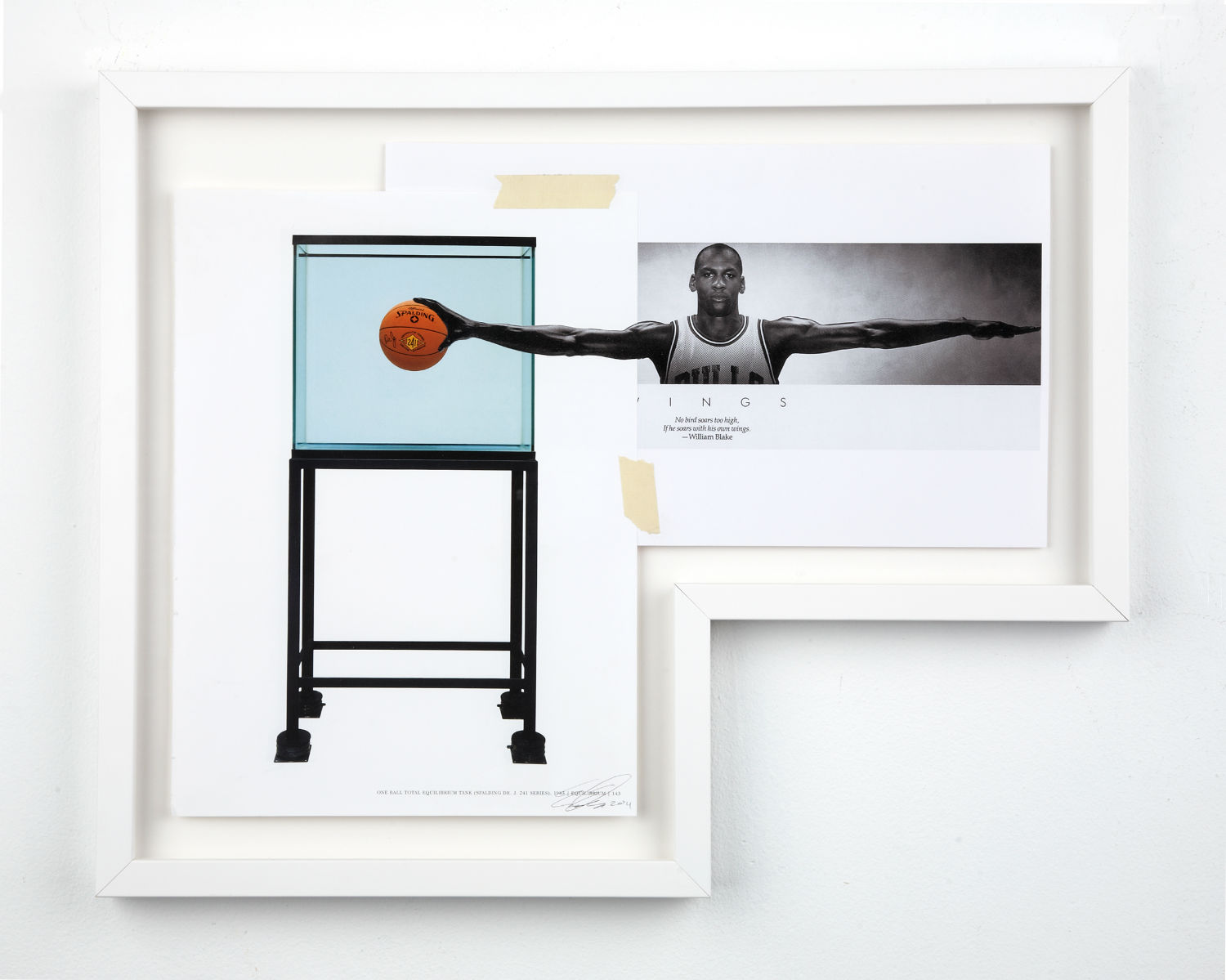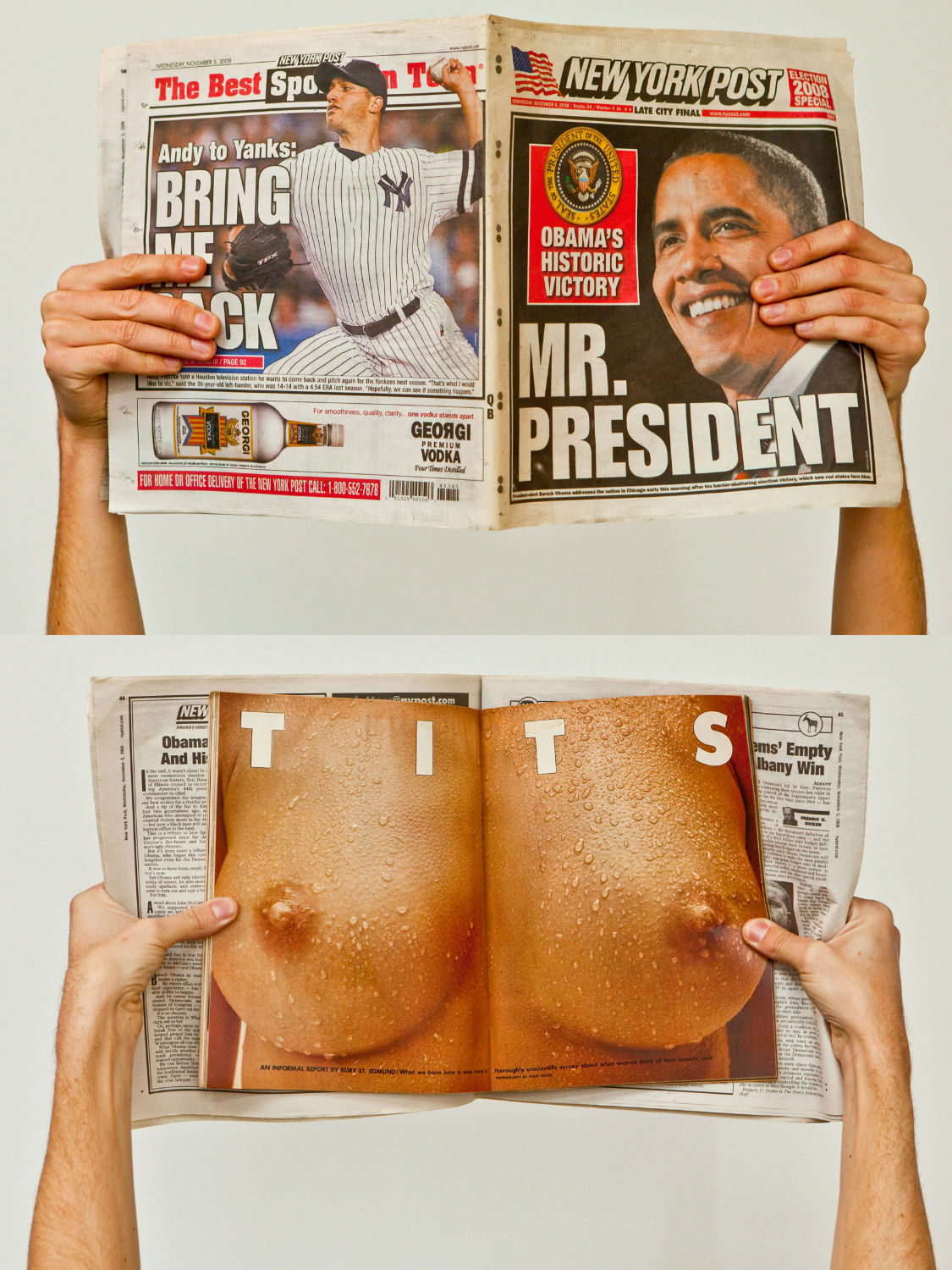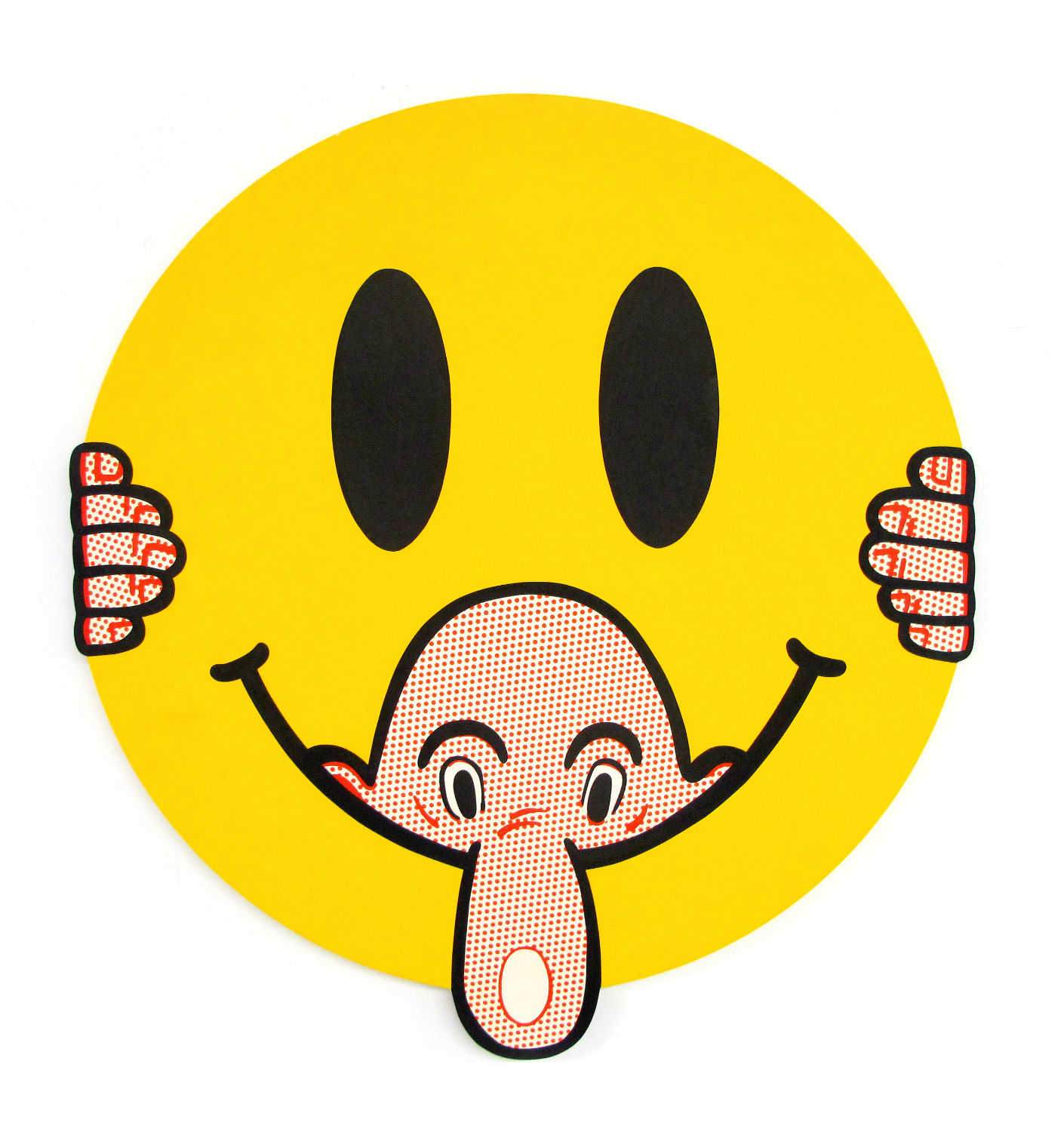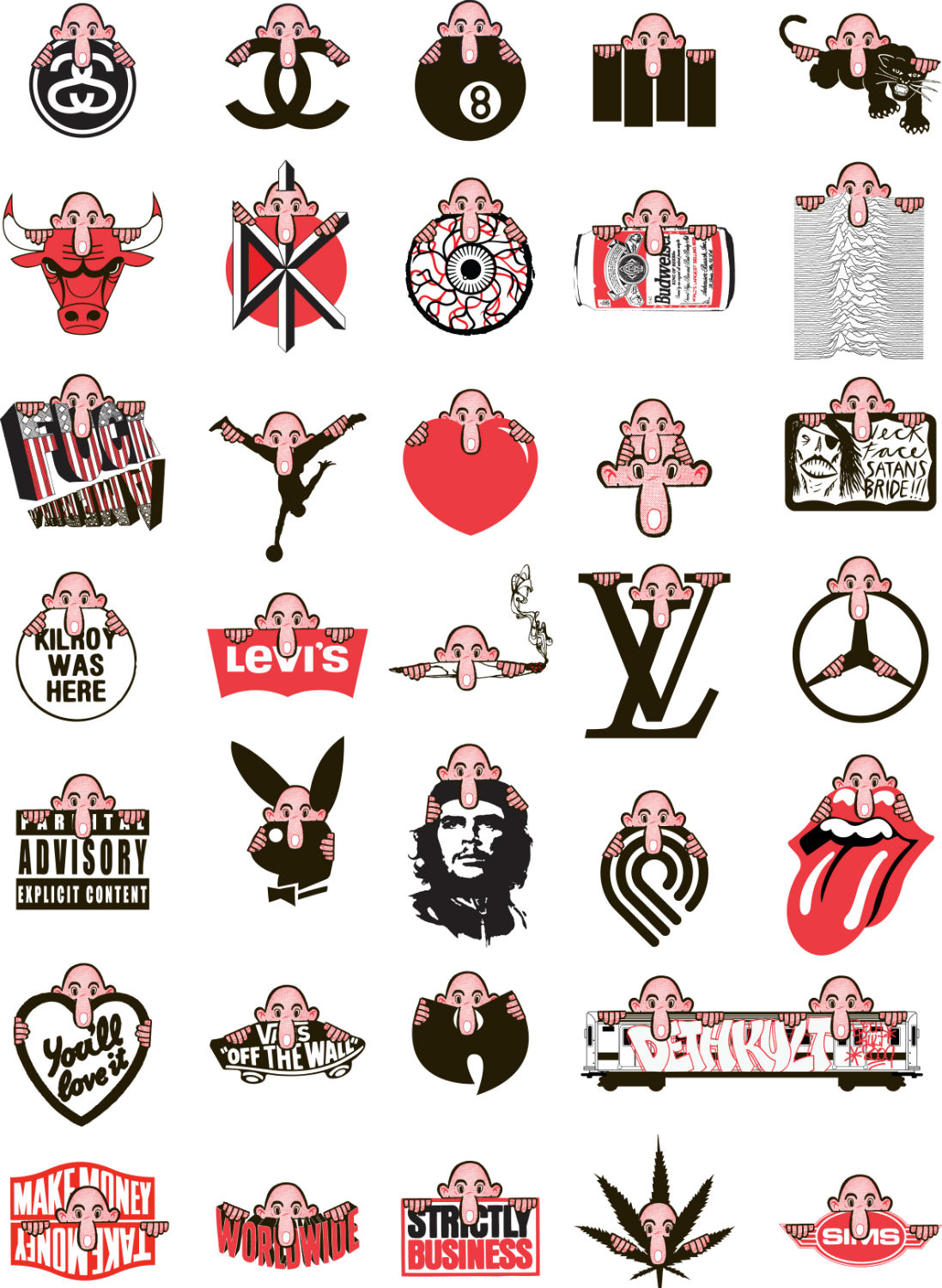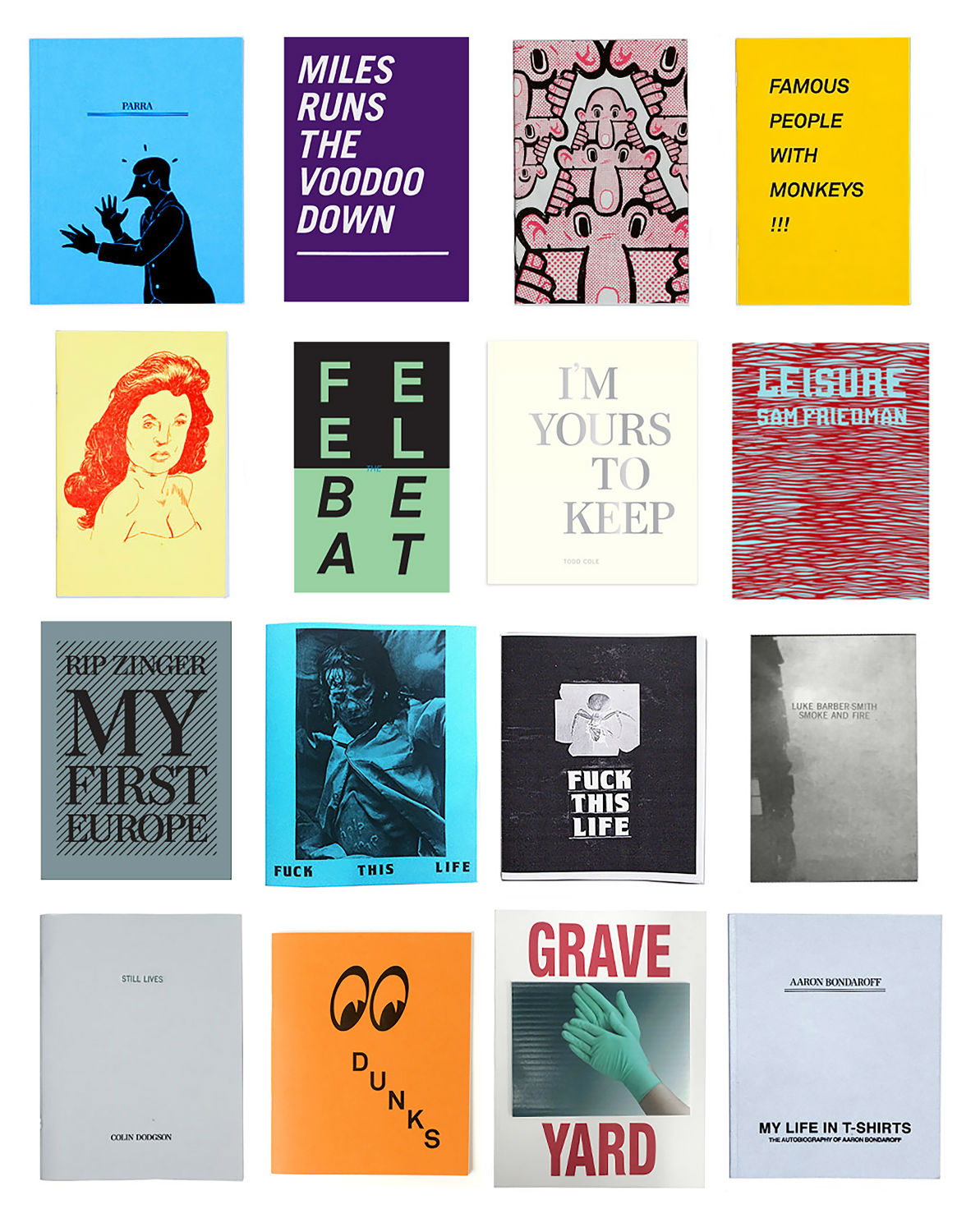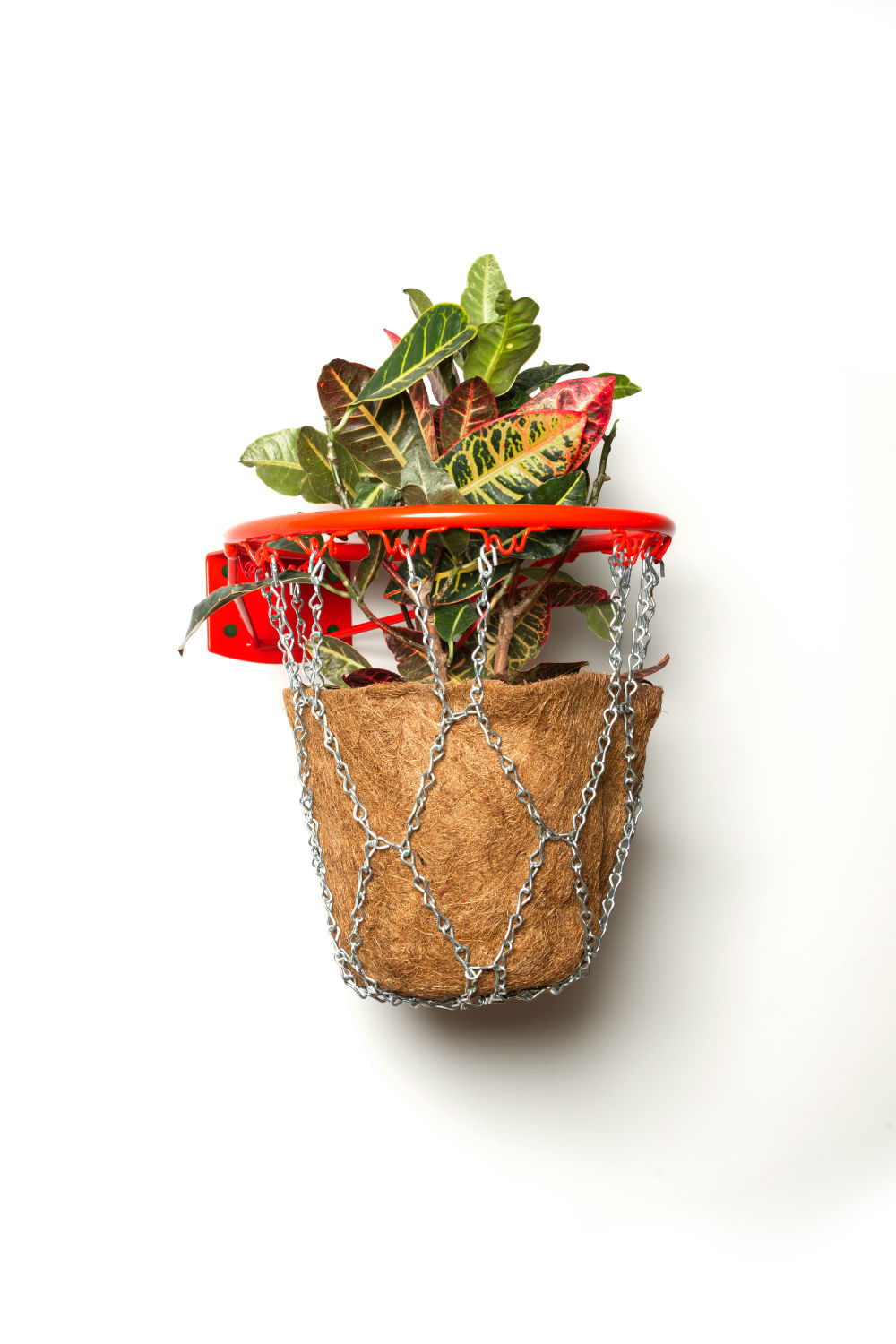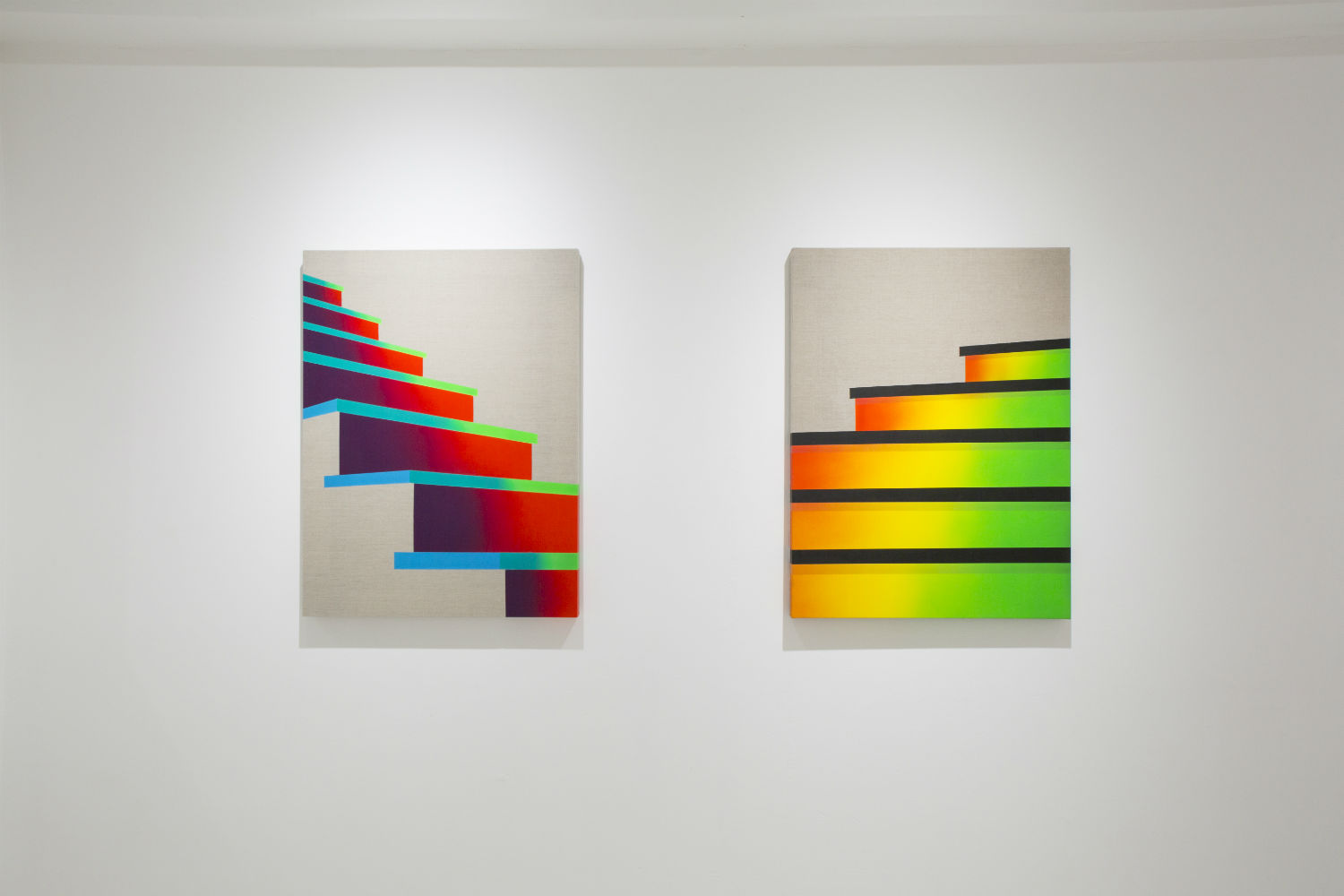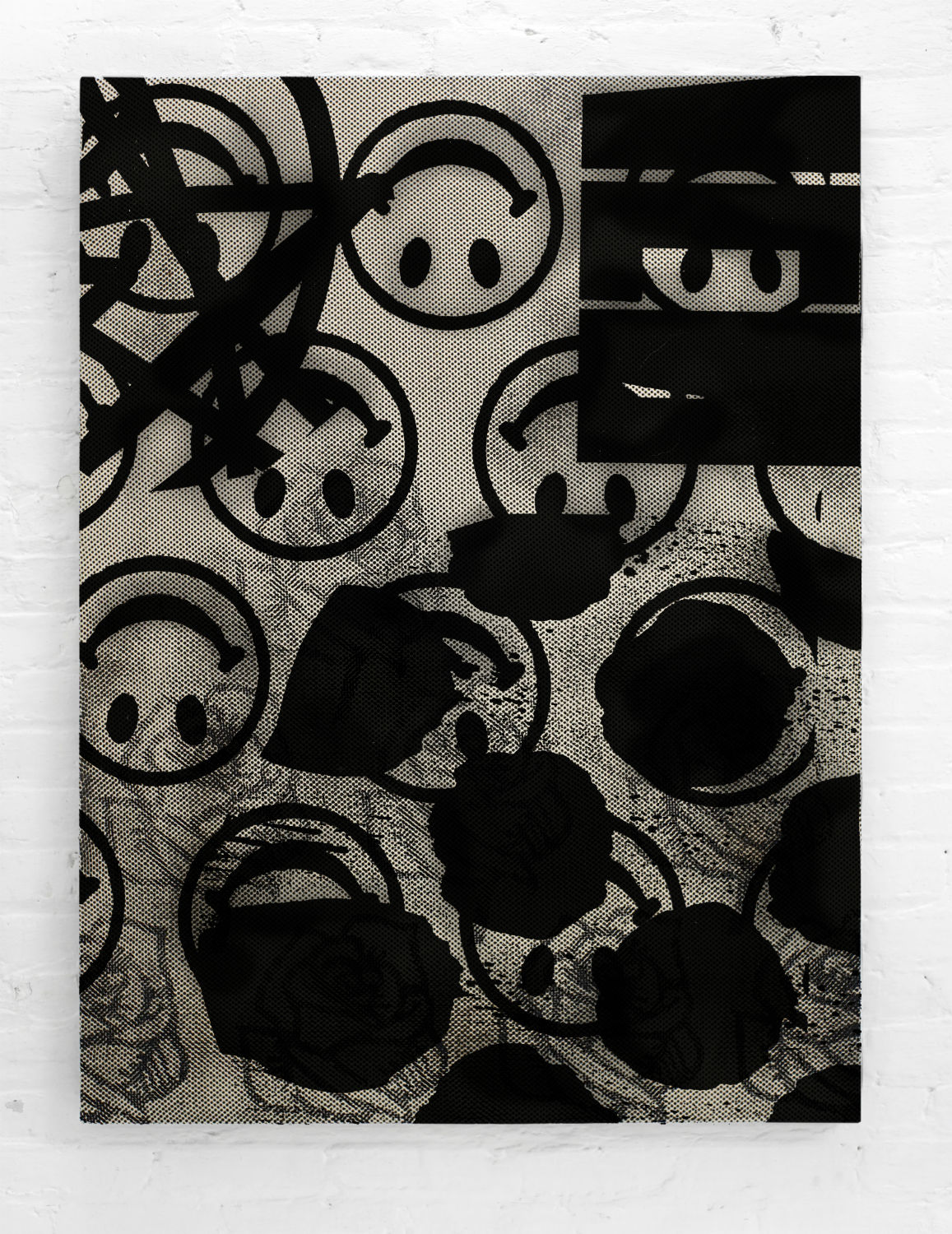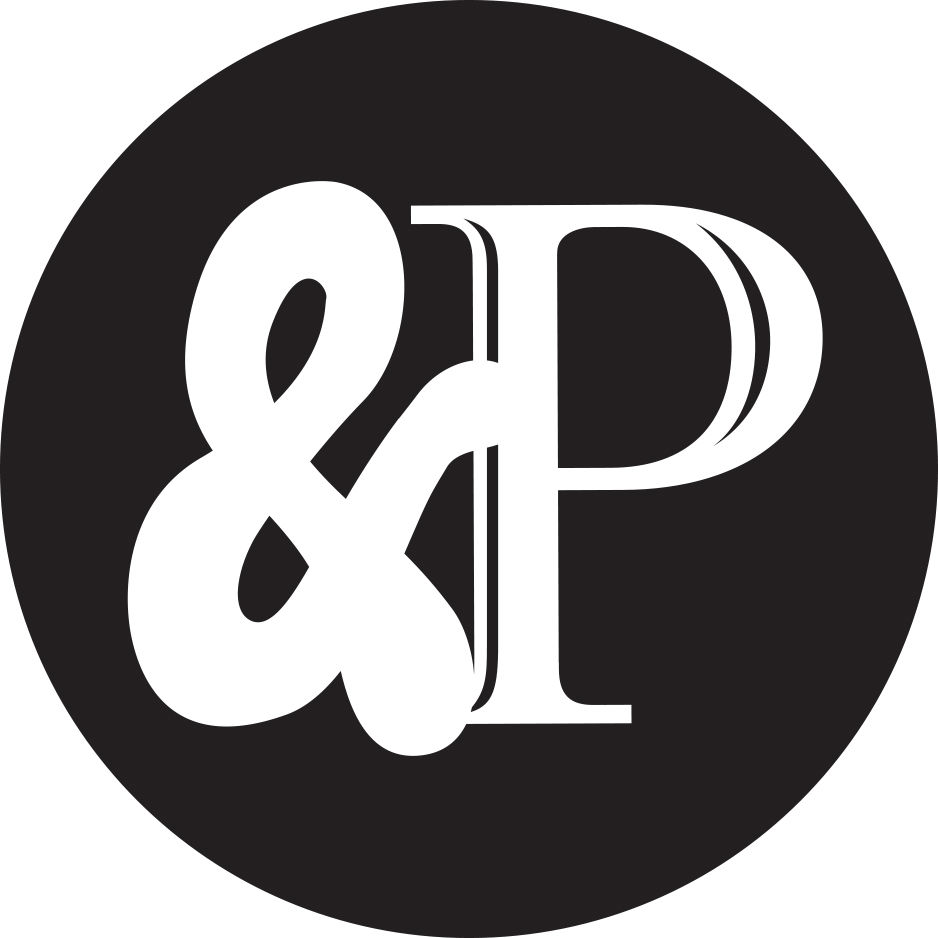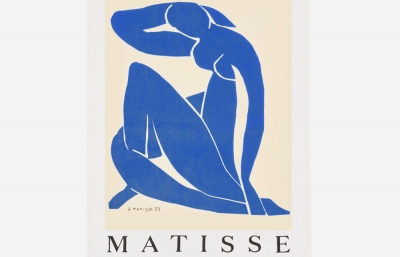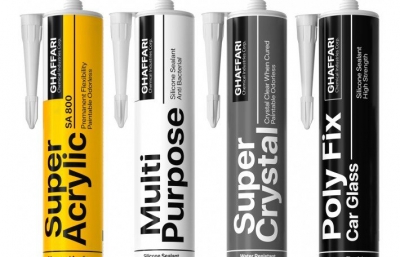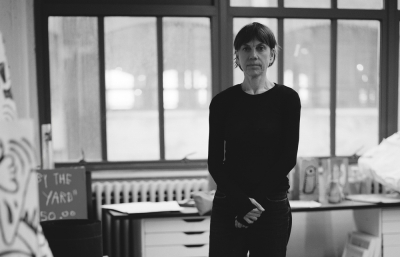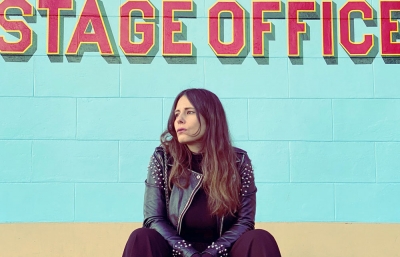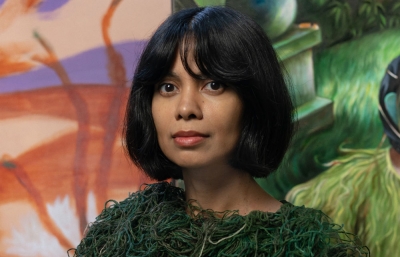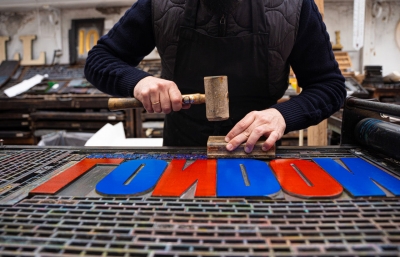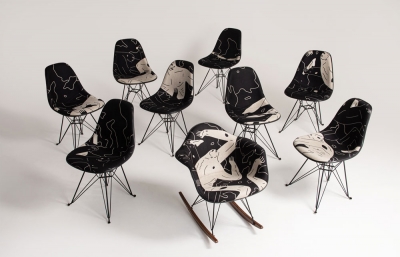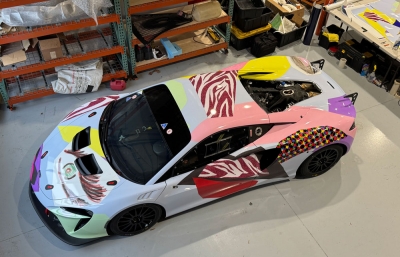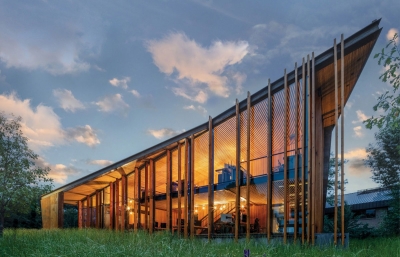Exactly 17 years ago, I moved to San Diego for a short stint, and that very same year, Eric Elms, born and raised there, up and left for New York, never to return. “There wasn’t room for both of us,” Eric shrugged, when I briefed him on this fact. He was right; we both wanted the rolled tacos all to ourselves. Making the ambitious leap back East at such a young age was a prime factor in Eric’s creative success, and another was working for a roster of artists and businesses who have become among the most recognizable names in their respective industries. Over time, based on a purposeful work ethic of producing continuous, quality results, Eric became a designer sought after by countless popular and underground brands. While his design career was thriving, Eric began to experiment with materials outside of the mouse and monitor, with an eye towards the white walls of a gallery.
This work has evolved from large, text-based sculptural objects to prints, paintings and basketball hoop planters. His most recent project involves a series of layered heat processes with black rubber dots applied to canvas that Eric compares to “Ben-Day and halftone patterns and the energy in photocopies and zines.” They are inventive in process, and in person, have an intriguing quality that is hard to compare. Somewhere along the way, AndPress was established to fulfill Eric’s desire to publish the palpable from his circle of talented friends, and the company has since published an array of titles with every detail taken into consideration for the end product. Described as a passion project, AndPress reflects Eric’s visionary appetite for a full menu of mediums. —Austin McManus
Austin McManus: What is the draw in New York? I recall you saying something along the lines of you would forfeit everything you have worked for if you left.
Eric Elms: My tastes and interests have changed a lot throughout the years, and New York is a place that is not only responsible for that progression but also fosters and cultivates any interest I’ve had. It is hard to be in New York and not grow because you are exposed to so many amazing things and people. I think, more than anything, the people keep me here. Nowhere in the world are there people doing as many different, interesting things as in NYC. I think that constant motion is the main reason I love this city. It is getting harder to experiment and make things here because of space and money, but I haven’t gotten to the actual point where I want to leave yet. I wouldn’t know where else to go.
Your studio, also known as an adult playground, is one reason not to leave. Is it easy for you to maintain a disciplined work schedule and go to your studio every day, being freelance?
Over the years, bouncing around among different disciplines, I have accumulated enough stuff that I usually make most things that pop into my head. The hard part isn’t coming into the studio regularly; it’s making myself work on the things I am “supposed” to be working on. It’s figuring out the balance between work that has to be done now, and work being developed to remain the priority for the future.
I have to say that I am somewhat envious of all the fun equipment you have for producing books and zines in your studio. Your publishing company, AndPress, has released an assortment of publications, with recognizable names like Kevin Lyons, Neck Face, Sam Friedman, Parra, Weirdo Dave, Aaron Bondaroff, Jason Polan, Luke Barber Smith and more. What was your initial motivation for spawning AndPress and do you release titles regularly or just when everything aligns right?
It was a combination of having a group of friends who were making cool things and a reaction to a lack of physical objects being available then. A lot of things were moving online, but that was before something like the NY Art Book Fair was in full swing, which helped foster a whole new generation of independent publishers. I felt like there was a slight lull of tangible things among younger kids in the city.
The first publication I had direct involvement with was the Neck Face book that KAWS published. I was good friends with Neck Face and I wanted to put something out, but really had no idea how it would happen. I ended up asking KAWS for advice and he wanted to publish it, so we all just connected and made it happen. That book planted the seed. I think it was a few years until I started AndPress, but it started with the same ethos. I wanted to set up the press so that I could cut out the middleman and make the projects I wanted to make, even if that was only an edition of 20 or 50. It’s easy to get things printed in small quantities, but I wanted to be able to do all the finishing and binding in-house. Being able to perfect bind, crease and foil stamp in my studio lets me make whatever I want, in whatever numbers I want. Usually the books happen organically and they are just with friends or people I admire. I love making books that are more involved and turn into unique small objects. Schedule-wise, it is loose; I try and make things on a regular basis, but the press is a full passion project so things just kind of manage to evolve.

Portrait by Austin McManus
Has DUNKS been your most popular title to date? I love the concept and the letterpress cover. I’m sure you have received entertaining feedback about that one.
DUNKS was one of the favorites I have put out for sure. It’s funny that you mention the letterpress cover because I do that a lot. I feel like most people don’t even notice or care that they are letterpress. It basically quadruples the cost of the covers but it is the type of detail I like to add. I try and put a lot of individual detail into each book, and many are geared toward pretty distinctive tastes or genres, so each one tends to hit a sweet spot for the people who do like it. If they like it, they really like it.
Your newest body of work involves some interesting materials and processes. What are you most excited about with this series, and do you see potential for it to evolve?
There is an interesting crossroads happening with these new paintings. The process and materials really represent my past while the imagery is very present and future. What excited me most was working with the materials to make those two things meld into one. Through a different project, I came across yardage of canvas that was impregnated with black rubber dots. I was immediately drawn to it because it reminded me of Ben-Day and halftone patterns and the energy in photocopies and zines. The process of learning how to work with these new materials really intrigued me. I had to fight with them to make what was in my head. I wasn’t learning existing techniques; I was creating processes to work with these new materials. Through a series of layered heat processes, I am almost manually applying the Xerox process onto the canvas. That process informs the imagery in these paintings but not in a random way. I am pulling from a huge archive of imagery from my art and design past and deconstructing that. These collages turn into the final layered canvases. A lot of my series of work have a very deliberate end point as far as execution. These paintings contain imagery and a studio process that is still evolving.
I really like the Xerox quality they have. Do you have any definitive plans for showing them, or is it too early in the game?
I have shown iterations of them while I was working through developing the processes to get to this point. None have been shown with this completed process. Right now I'm working on a full new body of these and have plans for them to evolve in the future. I don’t think it’s too early in the game, but I don’t have anything definitive lined up.
Having such a lengthy history as a designer, do you think it’s more of a challenge to be accepted and taken seriously when making work for galleries? People are prone to want to categorize and label, especially seeing something in another light, if they feel they’ve known it for a long time.
That does exist to some extent, but there is a long history of artists coming from different disciplines or maintaining a multidisciplinary practice their entire lives. I think it’s a natural thing to put people in categories. Most of the time it comes from people who aren’t familiar with the studio work I have been doing. I don’t think it’s necessarily a bad thing. Over time, if you put good work out consistently, it will stand on its own.

Is it difficult to break out of the mindset of working on a computer as a graphic designer and experimenting with various materials to make more abstract imagery?
When I left art school, I was designing for Supreme and working on more straightforward design projects. My personal work was a lot closer to what my graphic work was at that time, so there wasn’t much of a conflict. As those two have grown further apart, it has become both a struggle and a big help in my process. Most of my artwork revolves around an attitude of how I see the world, as opposed to a very specific style or character that runs through all my pieces. I think this conceptual way of working came from how I originally thought about individual design projects. Something intrigues me and I figure out the best materials that represent what I am trying to achieve. Sometimes that is very straightforward traditional painting, other times there is tons of experimentation involved. Now the computer plays a more technical role in the production of pieces rather than on the visual or conceptual side.
You were pretty young when you got to work alongside successful artists like Shepard Fairey, KAWS, Kevin Lyons and more. How important was it for you coming up around these types of creatives and their work environments in terms of your own artistic path?
It was super crucial for me at that age. I wasn’t really into art or creating things on a serious level before I met Shepard in San Diego. I didn’t really know that was an option. Once I moved to New York to go to art school, that opened up so many doors. I met KAWS within a month or two of moving to the city and started assisting him after that. It opened my eyes to someone who was creating work constantly and how an artist works in their studio. I think those are kind of obtuse concepts when you are first starting out, so for me, it was amazing to see. I look up to KAWS and all of those guys. To see where he has taken things is so impressive, but even what he was doing then is still impressive to me now. I have an appreciation for the work and also for how much it affected my path in life.
You have had two major exhibitions in Japan and have worked for a slew of brands and clients based there. How did you gain exposure there and what do you like most about Japanese culture?
My initial exposure to Japan was probably through designing at Supreme and traveling there with KAWS. After that, the opportunities just arose naturally through the people I met on each trip. Gallery shows and commercial work would bring me back fairly consistently over the years, so new things would pop up based on the new and old friends I would see each time. Tokyo is one of my favorite places. Their culture has such a respect for doing things the proper way, so if someone is interested in some hobbyist part of culture, they go in one hundred percent and do it perfectly. It is quality over quantity, and it is amazing that so many specific niches there are fleshed out to their full potential. I don’t think we have that care for the small details in the U.S.

A redesigned version of the Word War II image of “Kilroy was here” has appeared alongside your name for years and you even based one of your exhibitions in Japan entirely around that character. I love the idea of phenomenon graffiti where everyone is drawing the same image, each with different theories about its meaning, or maybe no reference whatsoever. What has been your fascination with this image?
I was immediately drawn to the Kilroy character. It has a cool backstory that is kind of a mystery. I look at it as "pre-graffiti" graffiti, before there were egos involved. It was simply saying, “I was here,” and being a part of something bigger, rather than a stamp from a specific person. The world was so much bigger back then, so seeing it in random places all over the world was probably pretty great because you actually had to run into it randomly. In the ’60s and ’70s, it became the basis of a bunch of random products and widgets, which I started collecting. It was the perfect vehicle for mashing up different objects and imagery, but kind of disappeared for a few decades. I started appropriating it when I made a book called Wish You Were Here that involved Kilroy going over every logo and iconic image I could think of at the time. It was just a funny comment on logo mashups and culture. From there it became a show in Tokyo that was based on the book. It keeps evolving in the background of my studio in both commercial work and paintings. It is definitely the most graphic thing that creeps into my personal work and really the only thing that moves back and forth between the two worlds.
Do you have a favorite project that was significantly more enjoyable than the rest? Is there an ideal type of job?
I don’t know if one job really jumps out. For commercial work, it is just great to work with people who have good taste. Even a million changes on a job are fine if you are working with people you respect who are like-minded.
Was there ever a fallback plan if the design gig didn't work out? And if you had to choose an alternative occupation, what do you think would hold your interest?
Coming up, I never really thought about it. I think the fallback plan is less about what I am doing and more about working for someone else. If I wasn’t designing or painting, I would be making something. I could see myself being a carpenter or woodworker.
I’m sure you have discovered some secret gems around the city after being in New York for so long. What’s a go-to for out-of-town visitors getting the Eric Elms tour?
I think the best deal to be had in NY is the one dollar red totes they sell at Strand Books.
---
Read more in the April, 2016 issue of Juxtapoz Magazine, on newsstands worldwide and online here.

